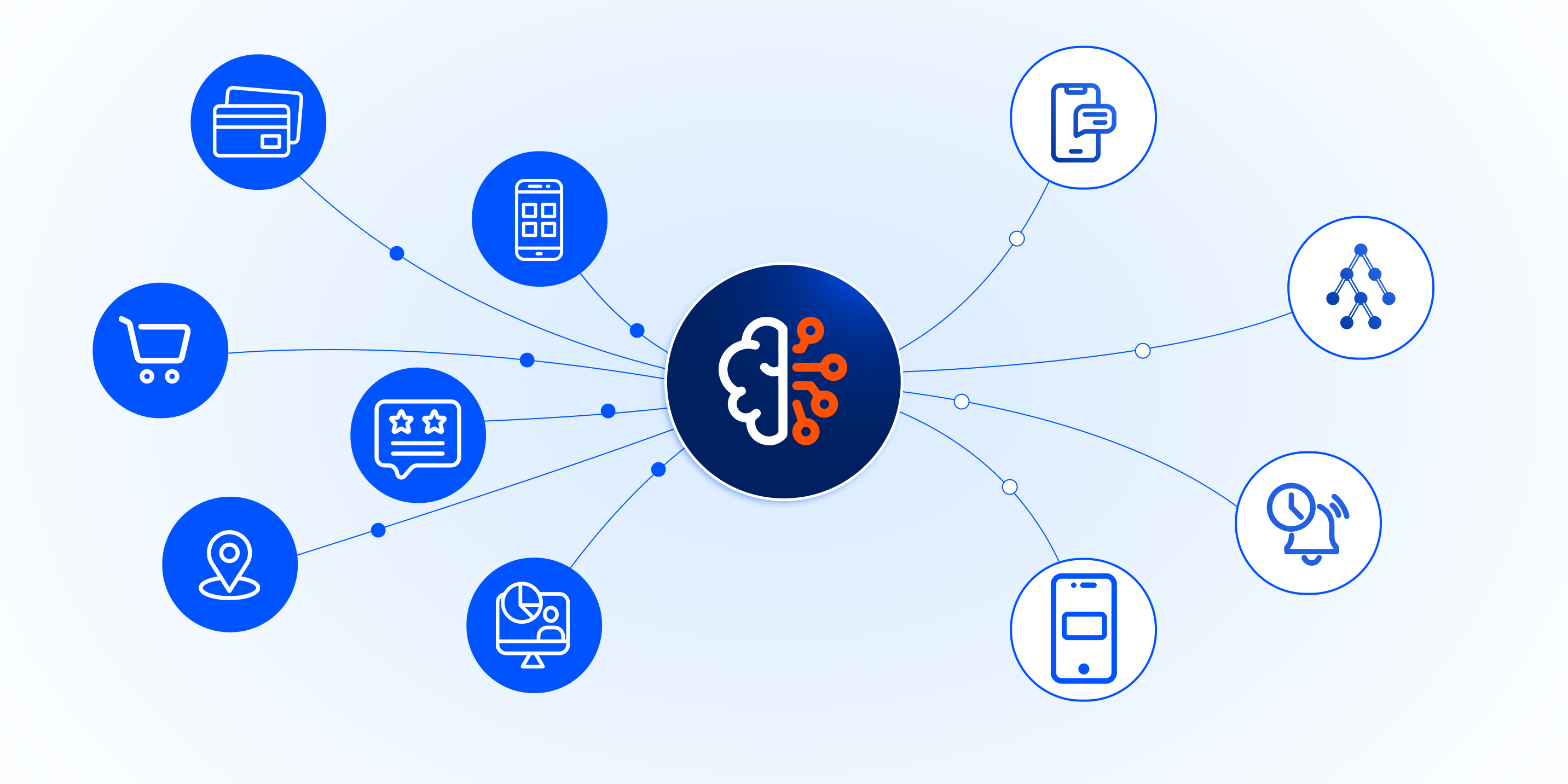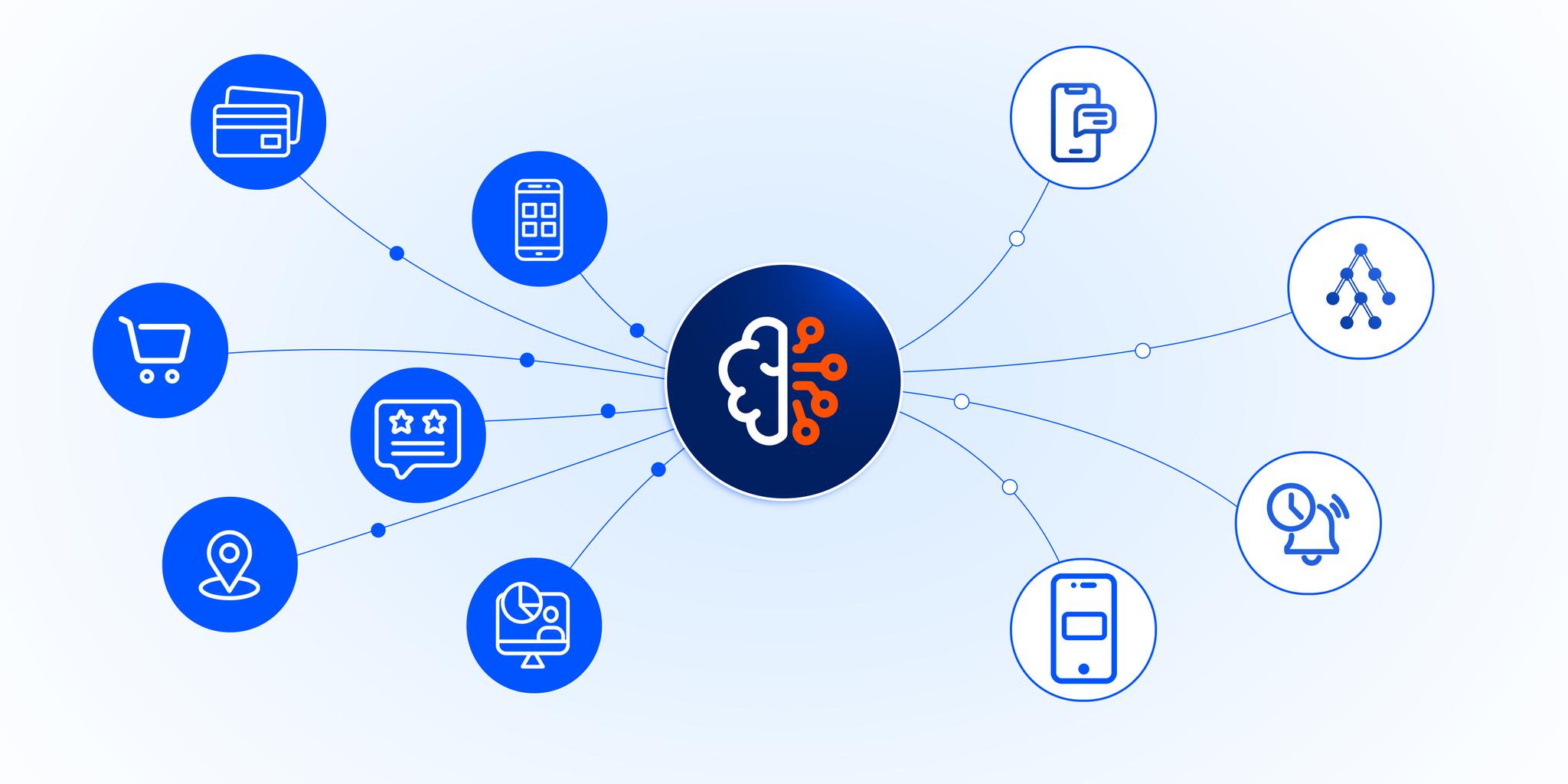- What Is a Real-Time Decisioning Engine?
- How Real-Time Decisioning Engines Work
- Key Benefits of Real-Time Decisioning Engines
- Real-Time Decisioning vs. Traditional Decision-Making
- Core Components of Real-Time Decisioning
- Real-Time Decisioning Use Cases Across Industries
- Implementing an AI Decisioning Platform
- Challenges and Best Practices
- Future Trends in Real-Time Decisioning
- Conclusion: Real-Time Decisioning Drives Real-Time Impact
In today’s fast-paced business landscape, making quick and informed decisions is no longer a competitive advantage, it’s a requirement. Real-time decisioning engines are reshaping how modern companies operate, enabling them to act on data instantly rather than hours or days later.
By processing data in the moment and leveraging AI, machine learning, and predictive analytics, real-time decisioning engines allow brands to sense customer behavior, predict intent, and deliver the most relevant action instantly.
This capability is essential for businesses that want to stay competitive, deliver contextual experiences, and create measurable impact across the customer lifecycle.
What Is a Real-Time Decisioning Engine?
A real-time decisioning engine is an AI-powered system that automates and optimizes decision-making in the moment. It processes large volumes of data continuously and determines the best possible action for each customer situation, instantly.
These engines evaluate customer behavior, journey context, and business rules to deliver personalized responses, without human delay.
Key capabilities include:
- Instant data processing for immediate insights
- AI- and ML-driven models to predict the next best action
- Automated decision execution across channels
Real-time decisioning engines go beyond traditional analytics. Instead of simply reporting outcomes, they determine and execute the right action.
With this approach, businesses can shift from reactive operations to proactive, experience-led growth.

How Real-Time Decisioning Engines Work
Real-time decisioning engines analyze incoming data the moment it is generated, not hours later. They continuously evaluate signals and context to make the best possible decision, then activate it through the correct channel.
The process typically includes:
- Collecting customer and behavioral data across channels
- Analyzing data using predictive models and AI algorithms
- Determining the next best action or response
- Executing that action instantly through the right channel
- Learning from outcomes to improve next decisions
Continuous learning loops allow the system to get smarter over time, improving performance and relevance with each interaction.
Key Benefits of Real-Time Decisioning Engines
Real-time decisioning delivers value across customer experience, efficiency, and business performance.
Top benefits include:
- Faster response to customer behavior and market changes
- More relevant and personalized customer experiences
- Higher conversion, engagement, and satisfaction rates
- Reduced operational load through automated decisions
By replacing guesswork with instant intelligence, brands create experiences that feel personal, timely, and seamless.
Real-Time Decisioning vs. Traditional Decision-Making
Traditional decision-making relies on scheduled campaigns, historical data, and manual processes. This often causes delays and missed opportunities.
Real-time decisioning turns this approach on its head.
| Traditional Approach | Real-Time Decisioning |
| Uses historical or static data | Uses live, contextual data |
| Delays between insight & action | Insight and action are instant |
| Mass messaging | Personalized 1:1 engagement |
| Reactive | Proactive & predictive |
Real-time decisions unlock the ability to act in the moment, when it matters most.
Core Components of Real-Time Decisioning
Real-time decisioning engines rely on three core pillars:
AI & Machine Learning
AI models detect patterns, identify intent, and recommend the next best action for each customer. They learn continuously to improve accuracy and effectiveness.
Predictive Analytics
Predictive analytics forecast outcomes based on historical and real-time data. Brands can anticipate needs, risks, or opportunities before the customer acts.
Real-Time Data Integration
Decisioning requires a constant flow of data across systems, web, app, CRM, POS, network, and more to enable accurate decisions in context.
Data only delivers value when combined with real-time activation. Insight without instant action leads to missed revenue and engagement opportunities.
Real-Time Decisioning Use Cases Across Industries
Real-time decisioning creates measurable impact across multiple industries, especially when combined with real-time engagement and omni channel execution. Here’s how leading brands are applying it today:
1. Banking: Real-Time Lending, Onboarding & Cross-Sell
Banks use real-time decisioning to personalize credit, lending, and onboarding journeys with instant relevance.
Common applications include:
- Triggering personalized loan or credit card offers at peak intent moments
- Adjusting credit limits dynamically based on spending and repayment behavior
- Sending onboarding nudges to complete applications instantly
tbi bank achieved a 3× uplift in lending conversion by activating real-time decisioning with Evam, triggering personalized offers at the exact moment of customer intent across digital channels.
This transition from delayed batch campaigns to real-time engagement improved acquisition, application completion, and conversion rates.
2. Telecommunications: Experience, NPS & Usage-Based Journeys
Telecom operators use real-time decisioning to respond to customer needs instantly across prepaid, postpaid, and digital touchpoints.
Common use cases include:
- Proactive retention actions driven by churn signals
- Usage-based upsell journeys for data or roaming packages
- Experience-driven interactions triggered by network or service events
Moldcell improved NPS and customer experience by shifting from batch campaigns to event-driven, real-time engagement with Evam, responding instantly to individual customer actions across channels.
This approach increased customer satisfaction, engagement, and overall digital experience.
3. Retail: Personalization at Scale
Retailers use real-time decisioning to personalize shopping across web, mobile, and in-store journeys.
High-impact applications include:
- Personalized product recommendations based on browsing signals
- Real-time cart abandonment recovery
- Loyalty based offers triggered by value and lifecycle stage
LC Waikiki achieved a +28% increase in digital conversion by activating real-time personalized engagement with Evam across web and mobile, delivering the right offer at the moment of customer intent. This helped LC Waikiki turn browsing into buying more efficiently and consistently.
Implementing an AI Decisioning Platform
Successful adoption of real-time decisioning requires thoughtful planning:
Assess data readiness and real-time infrastructure
Define top use cases tied to measurable outcomes
Select a platform that can both decide and execute
Enable marketing, CX, and product teams to operate autonomously
Many analytics platforms generate insights, but lack real-time execution. The real value comes when decisions and engagement happen in the same moment.
Challenges and Best Practices
Key Challenges
- Data privacy and governance
- Integrating with legacy systems
- Skill gaps in AI and decisioning operations
Best Practices
- Start with 3–5 high-impact journeys
- Continue testing and refining decision models
- Automate repeatable decision paths
- Align KPIs to revenue, retention, and CX outcomes
Future Trends in Real-Time Decisioning
Real-time decisioning will evolve rapidly in the coming years:
- AI will shift from assistive to self-optimizing
- Integration with IoT and contextual data will expand use cases
- Hybrid models (AI + human oversight) will gain importance
- Customer engagement will become channel-less, the decision follows the customer, not the channel
Brands that adopt now will create a strong competitive advantage as expectations rise.
Conclusion: Real-Time Decisioning Drives Real-Time Impact
Real-time decisioning enables brands to learn, decide, and act, instantly. This is the key to delivering customer experiences that convert, retain, and grow value.
The most successful companies don’t just analyze data, they turn data into action in the same moment.
When real-time decisioning is combined with a real-time engagement platform like evamX, brands unlock:
- Higher conversions
- Stronger loyalty and retention
- Better customer experiences at scale
The future of customer engagement belongs to brands that act in the now.








